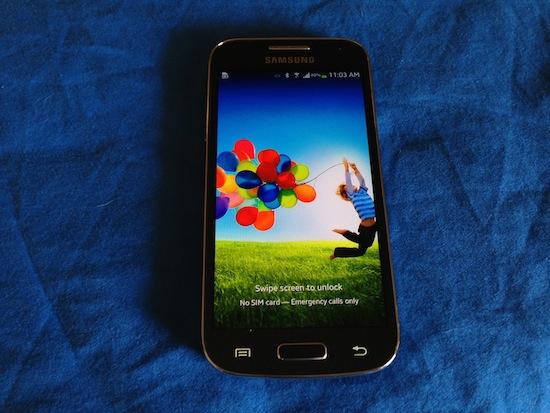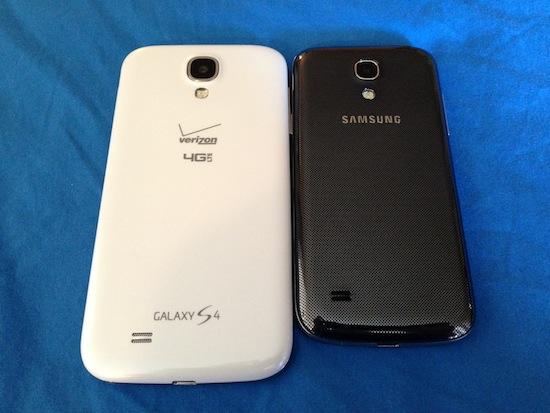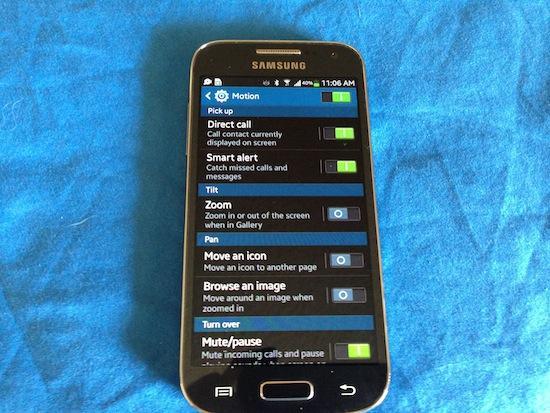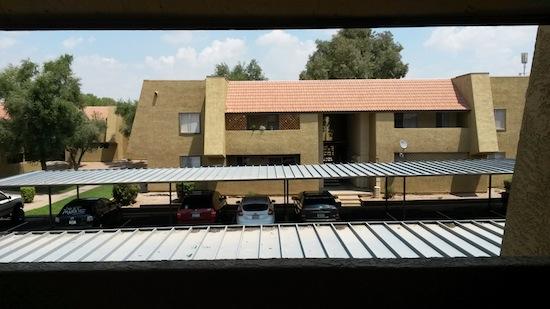
Samsung's inability to just be happy with one device has led to plenty of iterative handsets in the past, and it doesn't look like we'll be seeing any different routines from the company any time soon. It's led us to devices like the Galaxy S4 Active, the Galaxy S4 Zoom, and the Galaxy S4 mini. Some may see it as a bad move, saturating the market and what not, but Samsung obviously wants to make sure that they've got a device for everyone and anyone. Is the Galaxy S4 Mini the perfect device for anyone who wants to get a new phone, but doesn't want a huge display?
Let's find out.

The Galaxy S4 mini feels like a Galaxy S 4. When it comes to hardware, that will tell you everything you need to know right out of the gate. If you like the plastic design that Samsung has used over the last few years, then you won't have any problem with the Galaxy S4 mini. If you're not a fan of plastic, and want something a bit more "high-end," even in just design aesthetics, then you'll want to skip it.
However, I will tell you that the Galaxy S4 mini does feel a bit sturdier in the hand than the larger older brother. It may just be a trick of the smaller device, but it's one that works in its favor. You can't get away from the plastic look and feel, but the Galaxy S4 mini doesn't feel like so much of a toy as the Galaxy S 4 did, in my opinion. And that's a good thing.
Looking at the smartphone, you'll find a 4.3-inch Super AMOLED capacitive touchscreen display. The display won't blow you away by any means. The resolution sits at 540x960, which gives the screen a 256 pixel per inch count. It's not terrible, though. The Super AMOLED panel does, as usual, give the colors plenty of saturation, so you'll certainly be able to tell your greens are greens, and your reds are reds.
Above the display, you'll find the 1.9MP front-facing camera, a pair of sensors, and the speaker grille. Below that, and just between the start of the display, is Samsung's logo. Below the display, there's a single physical button that works as your Home button. On the left, the Menu capacitive key; on the right, the Back capacitive button.
On the bottom of the Galaxy S4 mini, there's the single microUSB port. Along the right side you'll find only the Power button. At the top, the 3.5mm headphone jack. And finally, on the left side, the single piece of plastic that works as the volume rocker. As a right hander, finding the Power button and volume rocker was easy, and the buttons worked quite well. Each physical button is raised just enough to be easily located. That goes for the Home button on the front of the device, too.
There's not a lot going on on the back of the Galaxy S4 mini. You'll find the 8-megapixel camera near the top, along with the LED flash right below it. As usual, Samsung has included another manufacturer brand, just to make sure you can remember who made your phone. Near the bottom you'll find the speaker grille.
I can't fault Samsung for using plastic on their devices, because there's simply just not anything that really brings down the experience. Sure, the Galaxy S4 mini doesn't feel as high-end as the HTC One, but I can understand the appeal. As sturdy as the phone feels, I'm not so worried that if I drop it, it's going to smash into a thousand pieces, and that counts for something. If you don't just outright hate plastic on your phone, then you won't be doing yourself a disservice by picking up the Galaxy S4 mini.

Just like its big brother, the Galaxy S4 mini comes out of the box preinstalled with Android 4.2.2 Jelly Bean, the latest version (officially) of Google's mobile operating system. You also get Samsung's proprietary software, TouchWiz. However, that's about where the majority of the major similarities disappear.
The Galaxy S4 mini has plenty of features tucked inside, don't get me wrong, but there is also quite a bit missing when we compare it to the Galaxy S 4. All of the "Air Gesture" settings are nowhere to be found on the Galaxy S4 mini, for example. Instead, if you're looking for features, you'll be given plenty of "Motion" options, like "Smart alert." This option, if enabled, will give you a vibration alert to notify you if you have missed any call or messages since the last time you picked up your phone. It's a nice little trick, and it certainly works as its described.
All of these options are available in the Galaxy S 4, obviously, and it was a bit disheartening to find that the majority of those air gesture features didn't make the cut, but I imagine it makes sense. After all, the Galaxy S4 mini is powered by a Qualcomm Snapdragon 400 dual-core processor clocked at 1.7GHz, with 1.5GB of RAM. Samsung made the decision to cut some features from their software, to make sure that the overall experience didn't falter for those who picked up the phone. Again, it's a shame to see some of those cool features cut, but Samsung's goal was achieved.
Because my experience with the Galaxy S4 mini wasn't weighed down by TouchWiz, especially after a few days. Even with the change of processor and allotment of RAM, TouchWiz still works just as well on the Galaxy S4 mini as it did on the Galaxy S 4.
Samsung is all about the features it provides in its proprietary software. It has to stand out against stock Android, and against every other manufacturer out there that utilizes Android as its mobile operating system of choice for new devices. With that, Samsung has indeed made a mark for itself in the industry, and that doesn't change with the Galaxy S4 mini. Even if it doesn't pack all the features that its bigger brethren do, what it does offer is still --in most cases-- more than what the other manufacturers do. Samsung may have made compromises for the Galaxy S4 mini, but it wasn't much, and it doesn't ruin the experience in the end.

So, the camera. As aforementioned, the camera is of the 8-megapixel variety. This is another area that saw some "refinement" when compared to the Galaxy S 4, as it doesn't offer the 13MP shooter its bigger brother does. However, not surprisingly, Samsung was able to shove all the camera's features into the Galaxy S4 mini's shooter. You'll still find things like "Best Face" and "Rich Tone (HDR)."
As far as image impressions, they are as good as you'd expect them to be, given the right lighting condition. Even with using the "smart camera features," I wasn't all that blown away by the images I took in specific situations. However, on a sunny day outside, the images were great. Throw some cloud cover in there, though, and the quality wasn't as great as I'd expect it to be in this day and age.
The Galaxy S4 mini's battery is measured at 1900mAh. That isn't big, but that shouldn't matter all that much. In my actual usage of the device, the battery lasted about five and a half hours, with pretty heavy usage, including listening to music pretty regularly. However, I did notice that the battery started to plunge pretty quickly the moment I started playing games from time to time. The battery won't get you through a full day if you're actually using it to do things like listen to music, talk on the phone, or watch videos, based on my usage. I'd recommend having a charger nearby, or maybe even an extra battery.
The Galaxy S4 mini didn't handle coverage all that well. And, moreover, there were plenty of hiccups in my calls and even downloads. When I was streaming music, even when I was in areas I get full bars on other devices, there were pauses and breaks. The call quality, though, was good enough, and I didn't drop any calls. I was asked to go away from ambient sound, once, though, when I was told I couldn't be heard all that clearly. On my end, though, voices came through clearly. I never thought I was talking to robots, anyway.
The Galaxy S4 mini has plenty of sacrifices. You won't get the full software suite with the smaller device, for instance, and you do lose some camera quality as well. The battery is smaller, and doesn't last as long. The display isn't as sharp. All of these things could be considered major negatives, and even detract from excitement for the handset for potential customers.
However, the Galaxy S4 mini isn't going to be marketed as the next big thing, or the next high-end handset to blow the rest of the competition out of the water. The Galaxy S4 mini is meant to fill a niche, and that's for those who want a smaller display, and probably (hopefully) a cheaper price tag.
If there is a major downfall, though, I'd say it's the proffered memory. The Galaxy S4 mini comes with 8GB onboard storage, instead of 16GB. I'm not sure why Samsung would make this cut, to be honest. Yes, it does offer a microSD card slot, but that's not a perfect fix for not offering enough built-in storage. In my opinion, the Galaxy S4 mini should offer 16GB of storage. No excuses.
The Galaxy S4 mini is a smaller Galaxy S 4, in just about every way you can think of. It offers a smaller display, less storage, a smaller camera, and cuts here and there that will obviously be felt by the owner. That is, unless you've never touched the Galaxy S 4 or its other iterations out there. If the Galaxy S4 mini is the only device you've looked at, and you want a phone with a smaller display but that still offers the newest version of Android, and with plenty of features thrown in for good measure, then the Galaxy S4 mini won't steer you wrong.
I do not necessarily believe that the Galaxy S4 mini had to take some of the cuts it did, like the onboard storage, but that's a decision that Samsung has made. The only silver lining that I can see from that decision is a cheaper price tag for the markets the Galaxy S4 mini finds itself in. There is a real worry that Samsung could indeed price the Galaxy S4 mini right out of the hands of potential customers, especially with the HTC One mini now being official.
The small version of the Galaxy S 4 isn't a bad phone, but it's also not the best phone out there right now with a 4.3-inch or similar display, either. Samsung is making sure that they offer a phone for every market or niche, and there's nothing wrong with that. Not really. The Galaxy S4 mini will attract certain customers that just don't want a device like the Galaxy S 4, and that's the plan. If they do go with the Galaxy S4 mini, I don't think they'll be displeased with the decision.
As long as the price reflects the changes that Samsung made.
What's Good: Sturdy frame. 8-megapixel camera is good enough in most situations. The additional software features add to the overall value.
What's Bad: Less-than stellar battery. Not enough built-in storage.
Conclusion: The Galaxy S4 mini may be the perfect device for someone who doesn't want to get a huge smartphone, but only if the price tag can match the device. For anyone who just wants a phone that takes great photos, and that's not made of glass, the smaller brother of the Galaxy S 4 will be a great choice. It's not the best smartphone of 2013, but it's not meant to be, either. It will be more than good enough for anyone who doesn't want to jump onto the large smartphone bandwagon quite yet, though.